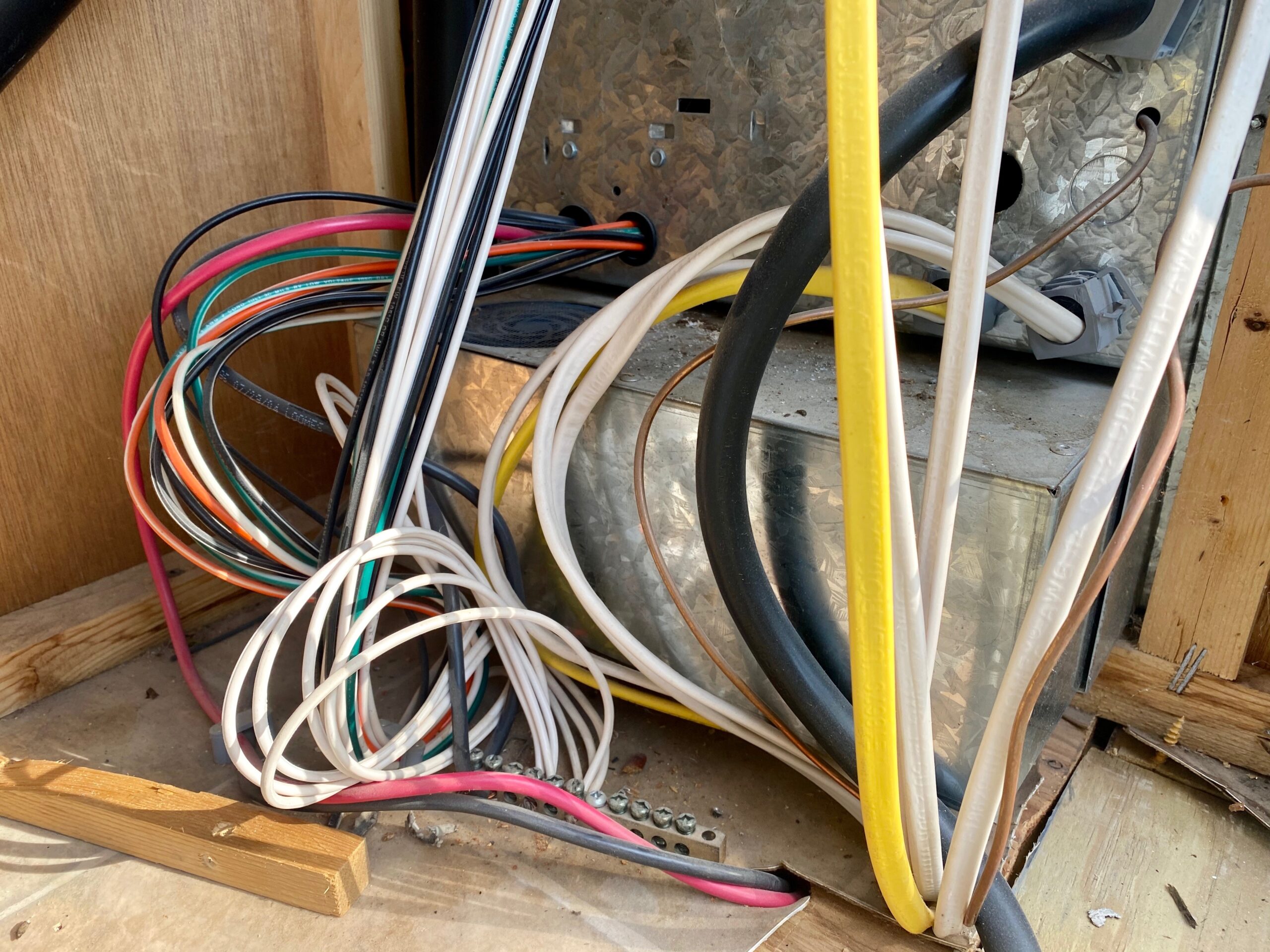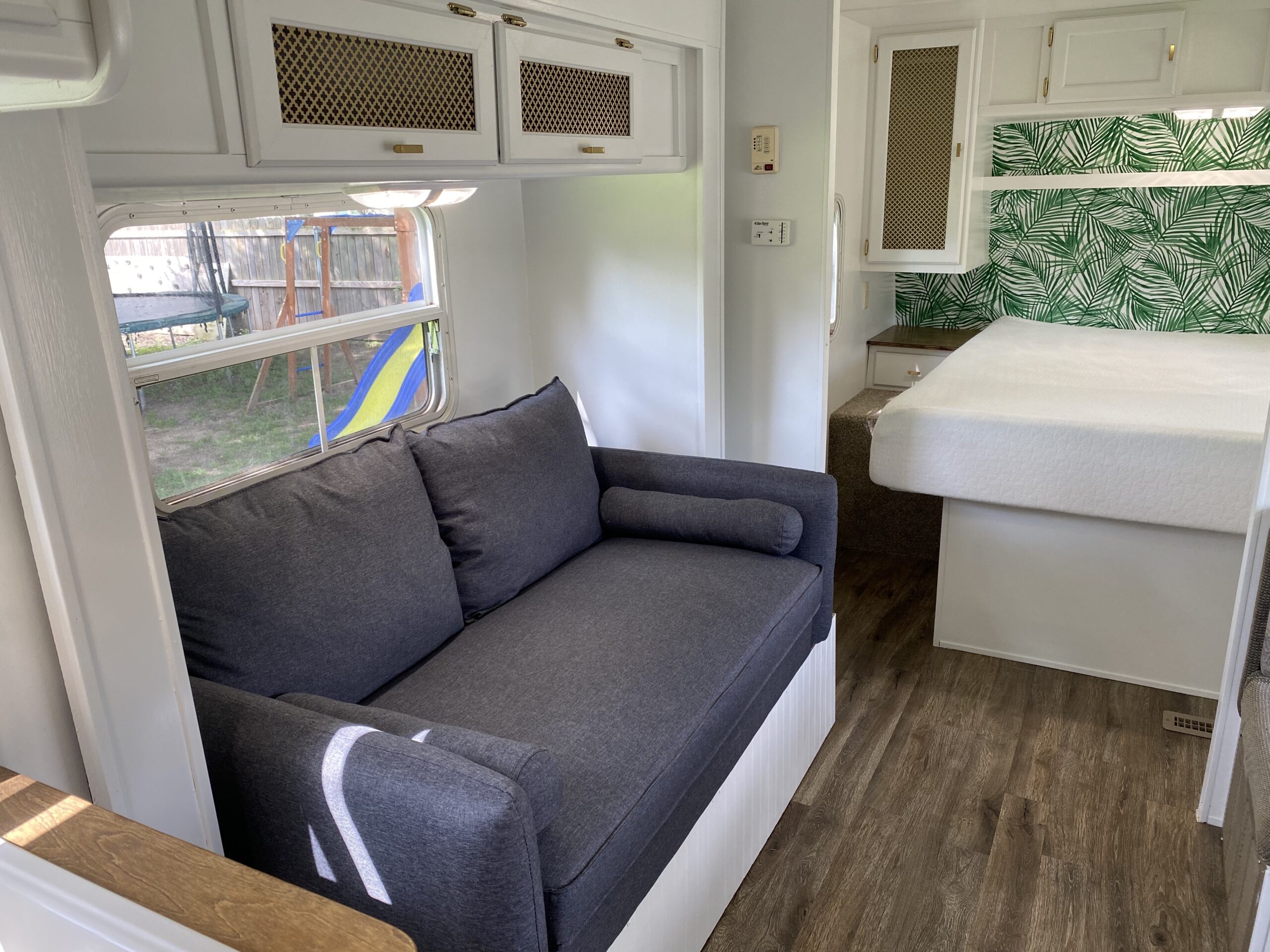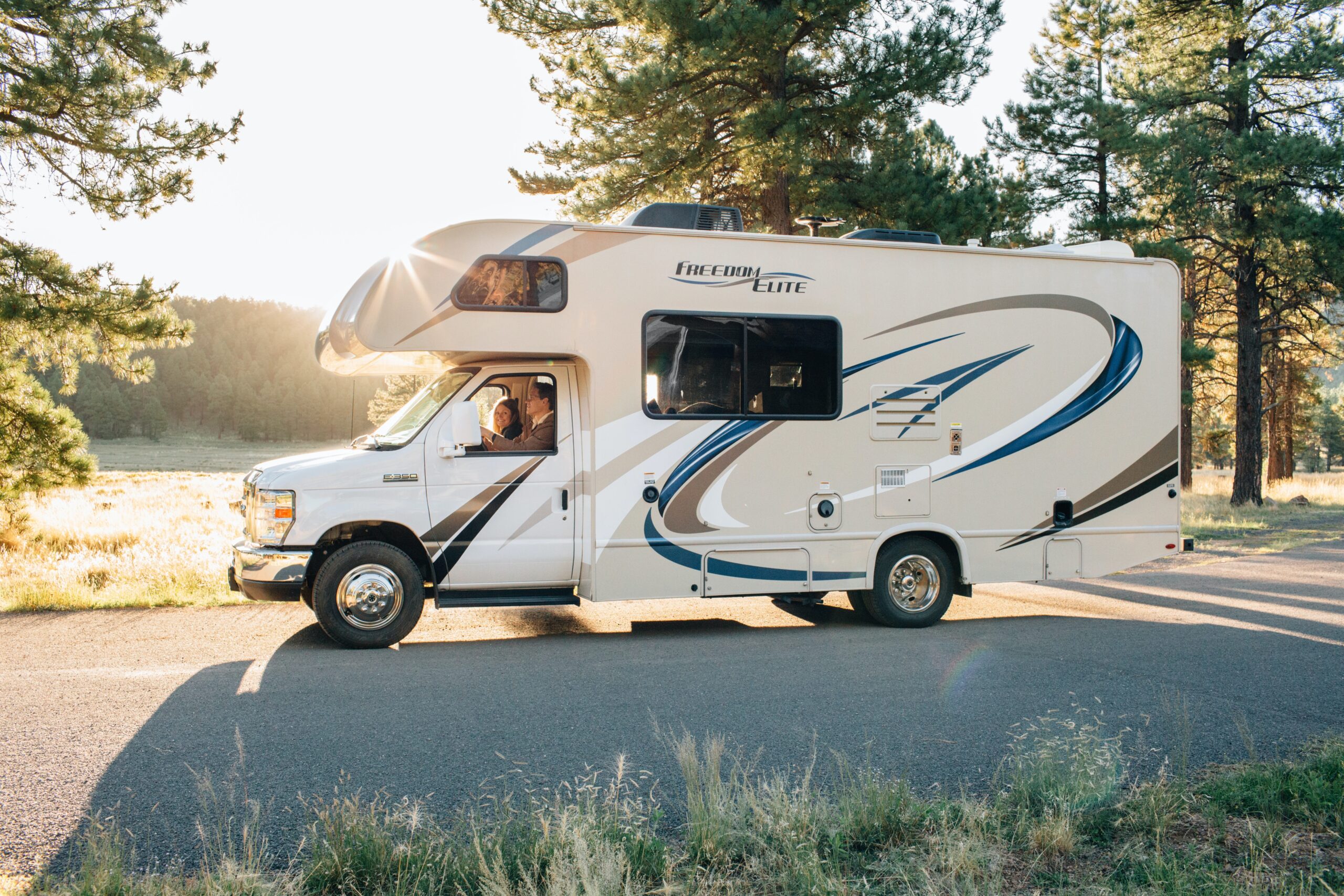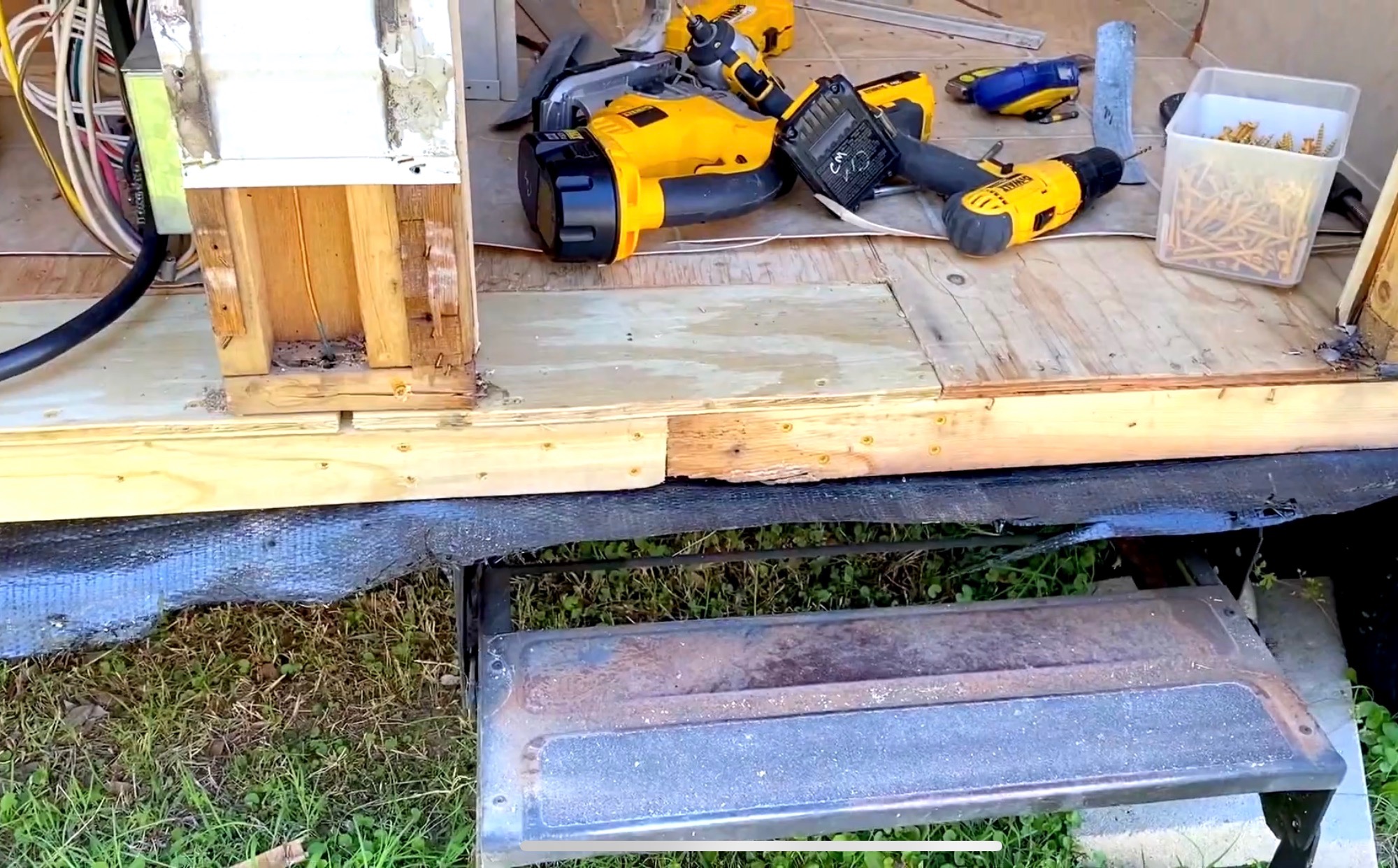Have you ever touched a metal component of your RV, like a door handle, and felt a zap or a tingle? That’s a potentially dangerous condition called hot skin or, to be more precise, hot chassis, caused by different factors. So, how do you troubleshoot an RV that shocks you?
To troubleshoot an RV that shocks you, you need a voltmeter and a non-contact polarity tester. Check the voltage of your RV skin to make sure there’s no excess voltage energizing the skin. Improper grounding and reversed polarity of outlets or extension cords could cause the hot skin condition.
If it all seems confusing to you, keep reading the article. In the rest of the article, we will elaborate on the steps you should take to troubleshoot the RV that gives you shocks.
We will also show you how to use the meter and tester to get precise readings and stay safe and touch on safety measures to take before camping in your next campground.
What Is Hot Skin Condition?
All modern RVs are safe and comply with electrical codes. But you should consider the proper voltage and grounding when plugging your RV’s shore power cord into a campground pedestal or home outlet. Otherwise, you’ll experience hot skin.
Although professional electricians and RVers know the phenomenon as “hot skin,” a hot cassis condition would be a more accurate term to refer to it.

The problem is in the chassis that spreads to the skin, affecting all other parts like door handles and wheels. So, a hot chassis can cause shocks when you touch any parts of your vehicle.
Hot skin is typically the result of high resistance electrical shorts that don’t trip your circuit breaker or blow a fuse. When the insulation on the conductor wears away, this kind of electrical short can happen.
An electrical short happens when electricity can’t find a way to the ground due to broken wires. It leads to current leakage, with the current still looking for ways to reach the ground.
It looks for shortcuts to flow back to the ground, like all metal parts of the RV. That’s how an RV’s skin and other components get energized.
More often than not, RVers don’t notice the problem with hot skin because of the rubber tire that functions as an insulator. So, they don’t realize their RV skin has an electric charge.
The problem shows itself when you touch the skin and make a complete circuit with the earth. The current flows through the body, and you’ll get a weak or strong shock depending on the electric charge and the wetness of the ground you’re standing on.
That’s why you should regularly examine your RV skin to make sure it’s not energized.
An important pointer: Even if you check for hot skin once and find no problems, you can’t rest assured the issue never arises. Changes in the campsite power can happen anytime. So, beware of even the slightest zaps and conduct a thorough examination if you see any problems.
Also, it doesn’t matter if your RV has fiberglass or plastic siding. Hot skin could happen in any motorhome since the chassis, frame, and copper tubing can also act as current conductors.
What Equipment Do You Need?
To check for any fault in your RV’s electric system, you need a couple of tools to detect any stray voltage. Here’s what you need:
Voltmeter/Multimeter

Voltmeters or multimeters are essential tools in any RVer’s toolkit. Choose an auto-ranging digital model to make sure you choose the right voltage range.
The number displayed on the voltmeter screen is the difference in voltage between two points, namely, the positive and negative voltage inputs. For example, if the negative input’s voltage is 120, and the positive input’s voltage is 120, the number shown on the screen is zero.
Non-Contact Tester

A non-contact tester looks like a pen that has a plastic tip. Get a non-contact voltage tester that can detect a minimum of 12-volt AC. The battery should be in good condition, or it won’t work properly.
Don’t check the voltage when you’re inside the RV. The tires act as insulators and can give you false readings. So, go out, stand on dry ground, and use the tester.
Check Live Outlets Using a Voltmeter
Before using a meter to check for a hot-skin voltage, make sure the campsite outlet’s polarity is proper (which we’ll talk about later in the article), turn on the circuit breaker, and connect the RV power plug.
A voltmeter has many different abbreviations and markings on the meter, which could be confusing to you. But for finding the energized parts of an RV that shocks you, you only need to measure the voltage. Thus, the AC V measurement will do.
- Set the meter to AC voltage of 200 volts or 750 AC as the voltage for hot skin is below 120 volts.
- The voltmeter has a red and a black probe that you should plug into the red volts and black COM connections on the meter, respectively.
- Put the black probe’s sharp tip on a metal that goes into the earth, like a metal water pipe or the pedestal power box.
- Put the sharp tip of the red probe on the RV skin, like a door handle. Remember! Don’t touch the body of the RV, or you might get shocked.
- Now check the voltage displayed on the screen. It should be zero or near zero. According to the National Electrical Code, a number ranging from 1 to 3 is acceptable.
- If you read a number higher than 3, it’s alarming. Turn off the circuit breaker and pull the power plug. That’s where you should call an electrician to find the exact source of the problem.
- To make sure you’ve been thorough, do the test at different parts of the RV, at least three locations.
Check for Energized RV Parts Using a Non-Contact Tester

Using a non-contact tester is easier than a voltmeter because a meter can display misleading results if you don’t use it properly.
You just need to turn it on, stand on the ground, and move the plastic tip on the RV skin’s metal parts. When it comes near an energized part of the motorhome, its light blinks, and the beeper makes noise.
Another advantage of a non-contact tester over the voltmeter is that with a voltmeter if there’s a layer of paint, rust, or plastic, you need to punch through it. But these testers work even an inch away from the RV surface.
When you check for hot skin using a non-contact tester, have these points in mind to get a precise reading:
- Don’t hold the tester like you hold a pen, with the tip of your fingers. Grip it firmly with one hand, wrapping your hand around it. That’s because you want it to sense the earth’s ground.
- Only stand on the ground because the tester needs to get the earth voltage to tell the difference between your hand and the RV skin. So, standing on the RV floor might lead to false readings.
- Check if it works properly by inserting it into an outlet. An outlet has a neutral slot, a hot slot, and a ground slot. The neutral slot is taller than the hot slot, and the ground slot is a U-shaped hole below these two. Since the neutral and ground slots don’t have an electric current, when you put the tester’s plastic tip inside them, there won’t be any beeps or blinks. Only the hot slot is energized.
- Before you do the hot skin test, check the campsite outlet for correct polarity and stray voltage with a non-contact voltage tester.
- Whenever you connect to a new campsite outlet, perform the hot skin test to ensure the highest safety levels.
- Sometimes the shock stops when the ground gets dry. Don’t think the problem is gone because the hot skin condition doesn’t go away by itself.
- If you detect hot skin, don’t try to fix the problem yourself; ask an experienced electrician to find the problem’s exact cause.
What Would Cause an RV to Shock You?
GFCI and AFCI Receptacles

According to the National Electric Code, it’s mandatory to install a Ground Fault Circuit Interrupter (GFCI) where electrical shocks are likely to happen. They’re built into the power outlet or the circuit breaker.
A GFCI acts like a scale that detects imbalances in electrical currents using a small current transformer. It prevents you from getting shocked by making sure the current between ungrounded and grounded wires of a circuit is balanced.
Suppose the current leaving the GFCI is 5 mA more than the current returning to the device. This difference in currents can lead to live wires and give you a shock, especially near water.
That’s what trips the circuit inside the GFCI and makes it open up its internal contacts. So, the GFCI shuts down the power to that circuit to keep you safe.
So, if you’re experiencing tingles, make sure you have GFCI breakers installed. Sometimes, when these devices operate properly, you might get annoyed by their constant tripping. But don’t try to remove them because they can save your life.
Even if you feel the tripping occasions are false, there might be something wrong with the electrical system of your RV, leading to current leakage. Plus, it’s illegal to remove these devices as they’re compulsory, according to the National Electrical Code.
Interestingly, the National Electrical Code allows you to install a GFCI without grounding. That’s because the GFCI is always checking for current differences of more than 5 mA to protect RVers from shocks.
But, if you choose to install GFCIs in your outlets without a ground, make sure to put a “Not Grounded” sticker on the outlet.
However, if there’s a leakage current, it doesn’t stop you from feeling a shock. It only trips the circuit so that you don’t get electrocuted.
GFCI producers recommend testing the outlets for proper operation once a month or at least once a season.
Another protection required by Electrical Codes is the Arc-fault Circuit Interrupter (AFCI). It’s a device that predicts short circuits due to loose wire connections.
The AFCI then shuts off the power before the short circuit happens. You can install them in AFCI circuit breakers or AFCI receptacles.
Electric Receptacle Reversed Polarity

Another possible reason is reversed polarity, which means a neutral wire is where a hot wire is supposed to be, and a hot wire is in a neutral wire’s place.
Although it’s rare and most campsites are maintained based on the latest standards, problems or mistakes can happen anytime.
Reversed polarity can create an energized RV chassis that leads to hot skin. However, it’s not a problem in modern RVs because the Electrical Code requires making plugs and receptacles with slots of two different sizes.
This way, you can plug them only in one way. So there’s no danger of plugging a neutral wire into a hot plug and vice versa.
Plus, today’s outlets have safety grounds, and we have 3-prong plugs and outlets. That’s why you’ll be unlikely to mix up the plugs and outlets.
Still, to be on the safe side, you can check the receptacle’s polarity using a polarity tester. You need a 30 amp male to 15 amp female electrical adapter.
To do this, do the following steps:
- Unplug the RV from the shore power.
- Plug the tester into the receptacle.
- Plug the adapter into the 30 amp plug.
If the tester shows the outlet is not polarized, ask the camp electrician to fix it or plug your RV into an outlet that you know is good.
Reversed Polarity of Extension Cords
Sometimes the problem lies in the reversed polarity of extension cords. You need to check a polarity test to make sure it’s ok using a polarity tester.
First, find an outlet that you’re sure works well and is properly polarized. Then, plug the extension cord into the outlet. Next, plug the polarity tester into the extension cord. If the tester shows problems, you can either fix the cable or replace it.
You can also do a physical examination to check the polarity of the extension cord. And before checking the wires, make sure both ends of the extension cord are unplugged, or you could shock yourself.
All extension cord wires are color-coded with three colored wires. The white wire is neutral, the green one is ground, and the black is hot. The white wire’s bare copper goes under a white colored screw. The green wire goes under a green screw. And the black wire goes under a brass screw.
That’s how you can make sure the extension cord is polarized correctly and rule out one other reason for your RV skin tingling.
Improper Grounding

All electrical connections, no matter at home or in RVs, need to be grounded to ensure there are no stray currents. By grounding connection, we mean a device that hooks up the RV to the ground and empties excess currents into the earth.
This safety precaution is essential in any electric connection since it can prevent shocking hazards.
Improper grounding can lead to shocks while touching the body or frame of the RV when you’re standing on the ground. Modern RVs are wired so that all metal surfaces have the same voltage as each other and the earth around them.
Every AC-powered RV comes with a grounded shore power cord that you should plug into a grounded outlet. This grounded plug is called an Equipment Grounding Conductor (ECG) and keeps the chassis voltage close to earth potential, which is 2 volts.
If the voltage of your RV skin or chassis is higher than 2 volts, it shows that your RV has lost its safety ground connection. Also, with proper grounding, it’s impossible to have a voltage of higher than 1 or 2.
And how does a ground line transfer the excess current to the ground? It’s based on a simple electricity fact. Electricity prefers low-resistance to high-resistance lines. So, ground lines are also low-resistance conductors that electricity flows through them to the ground.
So, what happens if your RV doesn’t have grounding? Without grounding or with faulty grounding, the excess electricity will build up in the RV chassis.
When you touch the metal parts of the RV, especially with wet hands, you’ll turn into that low-resistance conductor, and the electricity will flow through you, which can be dangerous and even fatal.
There’s a lower-resistance bond (connection) from the chassis to the power pedestal. And the power pedestal has a low-resistance connection to the power panel from the power line.
You can find the grounding pin of your RV, where you plug it. The ground and neutral wires of the generator are bonded to a ground rod. That’s what the camp electrician has already done, and all you need to do is plug your RV into the pedestal.
But sometimes, the pin breaks off, disconnecting the RV from the ground. That’s when you feel the zap while you touch metal parts of your RV.
You should check the grounding pin to make sure it’s ok and if it’s broken, call the camp electrician to fix it.
Besides, check to make sure that there’s only one Ground-Neutral connection at the main electrical panel. Also, that bonding should connect to the ground rod.
If you see more than one Ground-Neutral connection at the pedestal panels or sub-panels, or inside the circuit breaker or outlet wiring of the RV, it’s against the National Electrical Code.
Safety Measures in Case of Lost Grounding
A safety precaution is adding a circuit breaker on all branch circuits like what you have at home. When you have excess electricity in the system, it automatically shuts down the system.
You could also use a power management system that requires a neutral-to-ground connection at the generator. This system makes sure that you connect power from the park source with proper wiring.
It also protects against voltage surges and checks the line’s quality before you turn on the power. If there’s any problem with the campground’s power source, the protector won’t turn on and shows there’s a fault.
Why Does an Electric Shock Happen?

Sometimes, when you touch something in your RV, like the surface of an appliance or a doorknob, you might feel a zap or a serious shock. The reason is, “completing an electrical circuit.” It basically concerns “balance.”
If you have a “live wire” or electrified surface, it has some voltage or electrical flow. When you have your foot on the ground and touch the electrified surface, the voltage wants to flow through the surface to the zero-voltage ground.
You might think that sometimes you get zapped, and sometimes you don’t. That’s because your body doesn’t form a complete circuit. When both your feet are on the same surface, the voltage is naturally the same.
But, if you have one foot on the ground and another on the floor of the VR, there are two points of contact, leading to two voltage levels. Your body closes the circuit, and the current flows through your body.
Safety Measures While Checking Voltage
- When you touch meter probes of the campsite pedestal, don’t use both hands. Like professional electricians, put one of your hands in your pocket so that you don’t lean on or touch anything else.
- Always stand on dry ground. If the ground is wet, put a dry rubber mat on it to avoid any possible shocks.
- Before connecting or disconnecting the RV to the campsite power, always turn off the power pedestal’s circuit breakers.
- When you measure voltages, never touch the metal parts of the probes.
- Don’t plug the probes into the 10 Amp connection or set the dial to amps or ohms because it could blow out the fuse.
- Ask other members of the family if they have experienced the same problem with shocks. Sometimes people think the zap is just their imagination and simply ignore it.
- Make sure everyone is out of the RV, including pets.
Safety Measures Before Plugging Your RV Into the Camp Pedestal
Suppose you had a hot-skin problem at the previous campsite, you found the source of the issue and successfully solved it. But how can you be sure that it won’t happen the next time, creating even more dangerous conditions?
So, it’s better to take precautions in new campground sites to avoid shock problems or any electricity-related problems in the first place. Take these safety measures to make sure the electricity setup of the campsite is right and safe:
- Check the wiring using a polarity tester. A miswired circuit can damage your RV electrical wiring and create shocks.
- Don’t plug the RV into the pedestal with electric appliances switched on. This includes appliances connected to both the interior outlets and the RV electrical pedestal. After plugging in the power cord, you can turn the devices on.
- Check for proper grounding of the pedestal. Carefully examine the pin to see if it’s not broken off.
- Before you start a trip, check your batteries, wires, and connections regularly to prevent problems. Look for any possible damages, corrosions, or loose connection points. If you see anything suspicious, ask an electrician to check it.
- Check the electrical panels for any tripped circuit or a blown fuse.
- To plug or unplug power cables, don’t use both your hands and don’t touch anything with your free hand.
- Before plugging or unplugging campsite power, switch off the pedestal breakers.
- When you’re doing electrical work, don’t stand on any wet surfaces and always wear rubber-soled shoes.
- If you aren’t experienced in electrical work, it’s always a good idea to ask a professional to look at the problem. If you do choose to examine the RV to troubleshoot it, follow these steps: before doing anything, turn off the source power, handle wires with great care as if they’re live, and take necessary safety measures with using every tool.
Even the faintest shocks can be dangerous. Don’t play them down by thinking they’re temporary, and they’ll go away by themselves.
Wrapping Up
One of the most dangerous problems with RVs is electric shocks. You would think electric shocks come when you touch bare wires or put your hand in a power panel without taking precautions.
But most of the time, the electric shocks come when you don’t expect them, like when you touch a door handle.
An RV hot skin condition can happen due to any of the following reasons:
- Reversed polarity in the outlets
- Improper grounding
- GFCI receptacle
- The reversed polarity of extension cords
Electrical work can be dangerous! If you’re not comfortable doing electrical work, ask a licensed electrician to do the testing for you. If you find a serious problem with your motorhome or the campsite’s electric system, call the camp management or an electrician.
Electricity is a dangerous thing, so don’t test it. Always take safety precautions when working with electricity. Use safe tools and don’t stand on wet ground.






